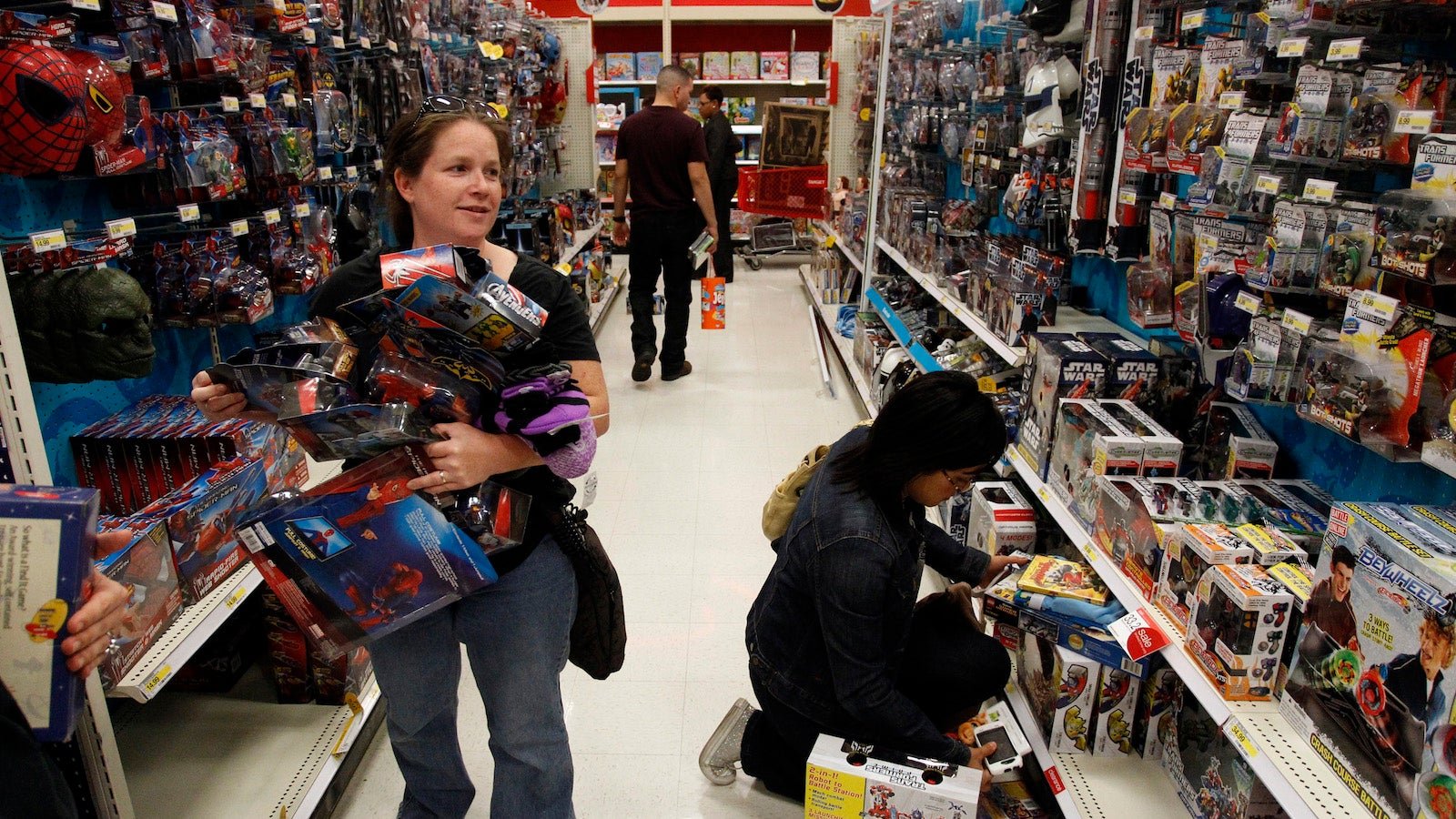The US toy industry is having a great year, and not just because of “Star Wars”
With Episode VII:The Force Awakens due to land in theaters this week, Star Wars has undoubtedly claimed the top spot on many holiday wish lists. But the film isn’t the only thing bolstering US toy sales, which are poised for their best year in a decade. Other high-profile film releases, fresh takes on old-school favorites, and breakout hits like Shopkins and the “Pie Face” game are also helping make 2015 a great year for toymakers and sellers.


With Episode VII:The Force Awakens due to land in theaters this week, Star Wars has undoubtedly claimed the top spot on many holiday wish lists. But the film isn’t the only thing bolstering US toy sales, which are poised for their best year in a decade. Other high-profile film releases, fresh takes on old-school favorites, and breakout hits like Shopkins and the “Pie Face” game are also helping make 2015 a great year for toymakers and sellers.
US toy sales, which have risen by at most 4% a year in the past decade, were up 7.5% during the first nine months of the year, NPD Group estimated. Growth is projected to settle between 3% and 7% for the year, toy analysts polled by Quartz said.
Toys tied to major film releases are part of what’s driving the surge, NPD’s US toy analyst, Juli Lennett told Quartz. Avengers: Age of Ultron, Minions and Jurassic World each made blockbuster-worthy debuts this year. And then, of course, there’s The Force Awakens, which has boosted sales for related Hasbro and Lego merchandise this holiday season.
Beyond those licensed properties, Moose Toys’ Shopkins figures, Hasbro’s “Pie Face” game, and toys associated with the Disney movie Frozen are selling well, as are classic toys like Barbie, Lego and Nerf, toy analysts told Quartz.
“It’s an interesting year to be tracking the toy industry,” said Lennett. “Usually I’ll talk about one big [toy]… but this year I have 10 or 15.”
Toymakers are also getting more innovative this year, dusting off plans that were shelved during the recession and subsequent recovery, now that the US economy is improving.
Mattel, for example, recently introduced “Hello Barbie”—a talking doll that can hold a conversation. And Hasbro upgraded its classic Nerf guns with new accessories and a model that shoots faster and farther than other blasters. Meanwhile, Danish toymaker Lego broke into the smart-toy market with Lego Dimensions, a video game that features console-connected toys.
Any other year, these toys would get even more attention from shoppers than they are now, Gerrick Johnson, toy industry analyst at BMO Capital, told Quartz. “It’s a little bit unfortunate that Star Wars is sucking all the air out of the room right now because toys are just performing really well,” he said.
They’re doing well, in part, because video games aren’t corroding toy sales as much as they have in the past. Big-ticket gaming consoles like the PlayStation 4 and Xbox One, which retail for around $300, sold well enough over the last two years that most people who had planned to buy them already did so, Euromonitor’s senior global toys and games analyst, Mykola Golovko, told Quartz.
Golovko said that demand is also fizzling out for electronics like smartphones and tablets, which typically eat up a large share of holiday budgets. So many people already have smartphones that most sales are replacement purchases rather than first-time buys—meaning they’re less likely to be given as gifts. “That opens up a lot of budgets for traditional toys and games as well as video games,” Golovko said.
All in all, it’s good news for toymakers like Hasbro and Mattel, as well as retailers like Toys “R” Us, which could use a boost after posting sales declines for the last three holiday seasons.
Of the research firms polled by Quartz, Euromonitor was among the most conservative in its toy forecast. The company estimated a 3% boost in US toy sales for the year, and a more than 2% increase around the world.
New electronics like hoverboards, wearables and smart toys are also getting a lot of attention from consumers this year, Golovko said, which dampened the outlook because they’re not part of the traditional toy category. But the research group expects growth in the traditional toy category to remain steady for the next three years.